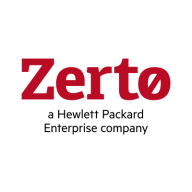

HPE Zerto Software and Carbonite Migrate are competing products in data migration and continuity. HPE Zerto Software appears to have the upper hand due to its comprehensive disaster recovery and real-time replication capabilities, even though Carbonite Migrate is noted for ease of use and straightforward data movement.
Features: HPE Zerto Software provides continuous data protection, integrates high-frequency replication, and ensures seamless recovery in various IT environments. Meanwhile, Carbonite Migrate is known for its efficient data transfer, providing simplicity in migration to minimize operational disruptions. HPE Zerto Software encompasses a wider range of features suitable for environments that require rigorous data protection.
Ease of Deployment and Customer Service: HPE Zerto Software involves a more complex deployment process necessitating specialized knowledge, while Carbonite Migrate offers a simpler setup with less technical expertise required. HPE Zerto Software customer support is detailed, prompting more interaction due to complexity, whereas Carbonite Migrate provides immediate support for smoother transitions.
Pricing and ROI: HPE Zerto Software typically has a higher initial setup cost, aligning with its extensive feature set and benefits in continuity and recovery, providing substantial ROI by minimizing downtime and optimizing operations. Carbonite Migrate presents a lower cost of entry, appealing to those seeking basic migration solutions.

Carbonite Migrate allows you to easily migrate physical, virtual and cloud workloads to and from any environment with minimal risk and near-zero downtime. Options for finely tuned automation help orchestrate every stage of the process.
Zerto is used for disaster recovery, business continuity, data migration, and ransomware recovery, providing continuous data protection and near real-time replication. Valued for ease of use, efficient failover processes, and versatile integration, it enhances organizational efficiency, reduces errors, and boosts productivity.
We monitor all Cloud Migration reviews to prevent fraudulent reviews and keep review quality high. We do not post reviews by company employees or direct competitors. We validate each review for authenticity via cross-reference with LinkedIn, and personal follow-up with the reviewer when necessary.